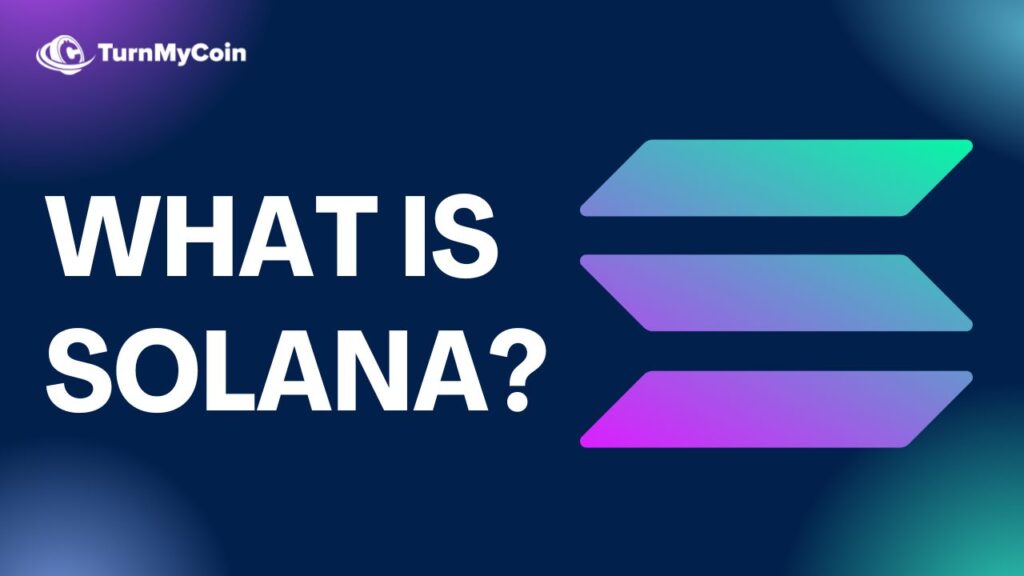Last updated on March 7th, 2023 at 11:48 am
What is Solana Blockchain? – An Introduction
Anatoly Yakovenko, a former Qualcomm executive, created the blockchain platform Solana in 2017. It promises to grow beyond what is generally feasible on well-known blockchains while retaining competitive prices.
It is a new, permissionless, and fast layer-1 blockchain, an open-source project that is very functional.
Solana employs a state-of-the-art hybrid consensus model that combines a unique proof-of-history (PoH) method with a high-speed synchronization engine (PoS). Since the Solana network can theoretically handle over 710,000 transactions per second, scaling solutions are not necessary (TPS).
The third-generation blockchain architecture used by Solana is intended to make it easier. Also, to create smart contracts and decentralized applications (DApps). The project supports nonfungible token (NFT) exchanges and various decentralized finance (DeFi) platforms.
The Solana blockchain was introduced during the 2017 initial coin offering (ICO) mania. The project’s internal testnet was made available in 2018. And after several testnet iterations, the leading network was publicly launched in 2020.
Why is Solana Blockchain special?
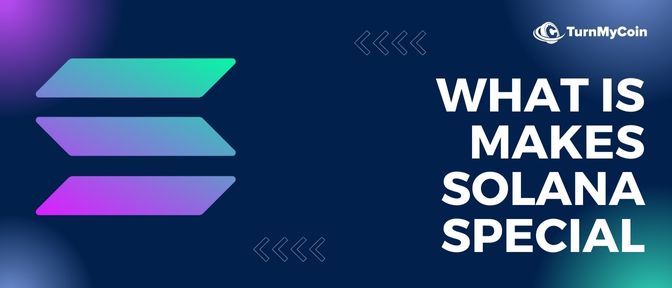
The ambitious plan behind Solana blockchain is to find a novel solution to the blockchain trilemma. It is an idea put forth by Ethereum’s creator Vitalik Buterin. Blockchain developers have to overcome the three main difficulties of:
- Decentralization,
- Security, and
- Scalability.
The trilemma describes these difficulties.
Blockchains can only ever provide two of the three benefits at once. Hence it is widely believed that their design forces developers to choose between one aspect and the other.
The Solana blockchain platform has proposed a hybrid consensus mechanism that sacrifices decentralization for speed. Solana is a pioneering blockchain project that combines PoS (Proof of Stake) and PoH (Proof of History) in a novel way.
Generally, the more and better a blockchain scales, the more and better it can support transactions per second. However, time inconsistencies and higher throughput in decentralized blockchains. This makes them slower, so it takes longer for more nodes to verify transactions and timestamps.
Solana’s design addresses this issue by selecting one leader node by the PoS mechanism. It determines the order of messages sent between nodes. As a result, the Solana network reaped the rewards of decreased workload. And also increased throughput even without a centralized and precise time source.
Furthermore, Solana establishes a series of transactions by hashing the result of one transaction. And utilizing that hash as the input for the subsequent transaction. Solana’s primary consensus mechanism, PoH, is named after this history of transactions. This idea enables the protocol to scale more efficiently, which improves usability.
How does Solana Blockchain function?
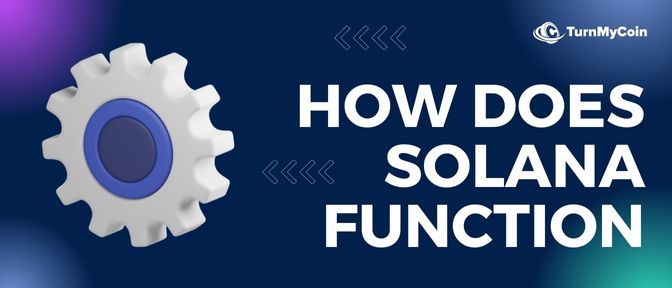
A series of calculations that produce a digital record that verifies an event has taken place on the network at any point in time is the foundational element of the Solana protocol.
It can be described as a data structure. This is a straightforward addition of a cryptographic clock that assigns a timestamp to each network transaction.
The practical Byzantine fault tolerance (pBFT) protocol, an optimized version of the Tower Byzantine fault tolerance (BFT) algorithm, is the foundation of PoH. The Tower BFT is an additional tool to validate transactions while maintaining the network’s security and functionality.
Additionally, PoH can be viewed as a high-frequency Verifiable Delay Function (VDF), a triple function (setup, evaluation, and verification). It generates different and trustworthy output. By demonstrating that block producers have waited long enough for the network to advance, VDF keeps the web in order.
The 256-bit secure hash algorithm (SHA-256), a collection of unique cryptographic operations, is used by Solana Blockchain. According to the set of hashes on central processing units, the network periodically samples the number and SHA-256 hashes. Thus providing real-time data.
A specific piece of data that was created before a particular hash index was created can be recorded by Solana validators using this series of hashes. After this specific piece of data is inserted, the transaction timestamp is generated. All nodes on the network need cryptographic clocks to keep track of events instead of waiting for other validators to verify transactions to achieve the claimed high TPS and block creation times.
The Solana (SOL) token
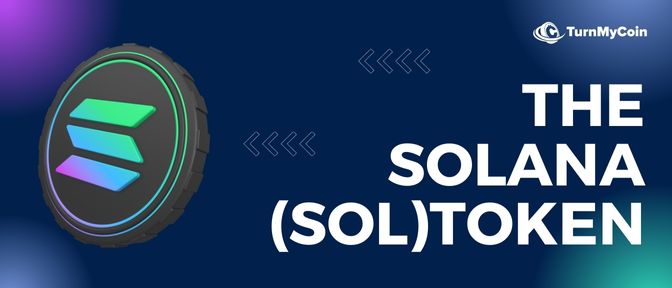
It is the native and utility token of Solana that offers a way to transfer money. It as well as blockchain security through staking. SOL was introduced in March 2020. And has worked to rank among the top 10 cryptocurrencies entering the market based on total market capitalization.
The Ethereum blockchain uses a similar operation scheme to the SOL token. Although they function similarly, Solana token holders stake the token to validate transactions through the PoS consensus mechanism. In addition, the Solana token is employed to pay transaction costs, receive rewards, and allow users to participate in governance.
To answer the question, “How many Solana coins are there?” more than 500 million tokens will be released in circulation. And with the current total supply of Solana tokens exceeding 511 million. And the circulating collection of Solana is slightly more than half that amount. Only 38% of SOL tokens are set aside for the community. At the same time, the Solana Foundation and the company’s founders control about 60% of them.
Tokens for Solana can be bought on most exchanges if you’re wondering where to buy them. Top cryptocurrency exchanges in Solana to trade on include:
Solana versus Ethereum
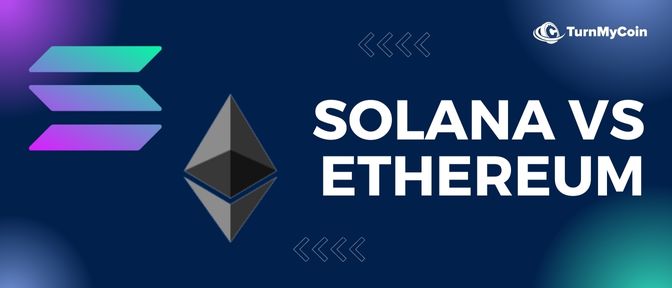
For the project that Solana Blockchain is, it has received global appreciation for its performance and speed, and it has even been considered as a serious rival to Ethereum and other top-tier cryptocurrency projects like Avalanche.
So, how does Solana differ from Ethereum, and can it be viewed as a potential Ethereum replacement?
According to reports, Solana came with the dominant innovative contract platform in terms of processing speed. Furthermore, to avoid sluggish transaction confirmation, Solana employs various consensus algorithms. As a result, Solana is one of the market’s fastest blockchains due to this feature, enabling it to compete with businesses outside the cryptocurrency space.
The current Ethereum proof-of-work model is only 15 TPS scalable compared to this enormous number. Solana is, therefore, thousands of times faster than Ethereum. Furthermore, as the project uses new tokenomics for lower fees, the network’s extreme cost-effectiveness is another benefit of Solana.
It is also important to note that Solana’s blockchain is more environmentally friendly and sustainable even though it uses one of the PoS variants. Ethereum, in contrast, uses a PoW model that calls for a lot of computational power.
You can read our detailed article on Solana Versus Ethereum here.
Solana’s negative aspects
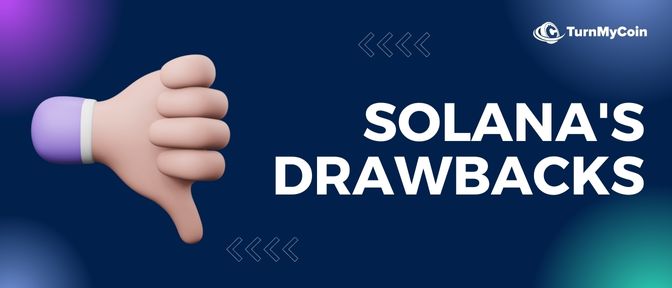
The decision to purchase Solana is still yours if you’re still debating whether it would be wise to invest in it. Despite the apparent benefits, Solana has drawbacks, just like any other crypto project that has already been launched.
Since there aren’t many blockchain validators, the Solana blockchain is still susceptible to centralization even though it can compete with high-end blockchain projects.
Can Anyone on the network become a Solana validator?
Well, doing so is still challenging due to the high computing resource requirements. Additionally, the protocol continues to identify itself as a beta version of the mainnet, which does not rule out the possibility of bugs and errors.
Despite these problems, Solana remains one of the largest crypto ecosystems and appears to be growing in the right direction.
Solana Pay history
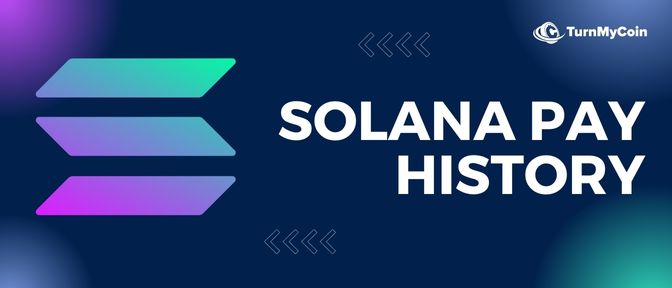
While Solana Labs played a significant role in the development of Solana Pay, other businesses also contributed. Circle, Checkout. Com, Chicon, Phantom, FTX, and Slope, all contributed to laying the groundwork for the digital payment platform Solana Pay.
According to Team Circle, a Visa study shows that “73 percent of businesses believe accepting digital payments is fundamental to growth in 2022.”. According to the same survey, 59 percent of those companies “already use only digital payments or plan to do so within the next two years.”.
These facts served as the basis for Solana Pay because Solana Labs, Circle, and their other partners want to be prepared for these early adopters.
Solana Pay benefits
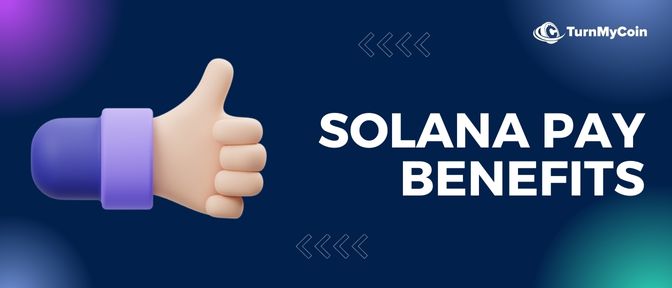
Of course, Bitcoin BTC, Ethereum (ETH), and other cryptocurrencies assert to offer a near-instant crypto payment. Still, these networks (especially Ethereum) are expensive and not as instant as they might claim.
For instance, the average transaction rate for Bitcoin is seven, while the average transaction rate for Ethereum is thirteen.
Moreover, both Bitcoin and Ethereum also harm the environment. Nevertheless, businesses and customers are drawn to Solana’s network due to its speed and affordability.
Without involving a third party, such as a bank or payment processor, Solana Pay enables its users to make real-time payments in SOL, or any other supported Solana token, such as real-time payments in USD Coin USDC.
Additionally, Solana Pay does not permit chargebacks, eliminating a costly problem that conventional merchants frequently encounter.
Solana Pay is also perfect for merchants because it provides thorough reports on every transaction, including the wallet destination, currency type, transaction amount, and text fields for the merchant to describe the transaction.
The customer and the merchant can conduct business anonymously, thanks to the fact that these details are kept completely hidden from the rest of the network.
The Solana team wants the world to view Solana Pay as something bigger than just enabling users to “pay with crypto,” as Solana Labs’ head of payments, Sheraz Shere, explains in his blog post announcing the service. Instead, Shere sees Solana Pay as a platform where “all currencies are on-chain and used for a wide range of transactions,” he claims.
Solana Pay’s Drawbacks
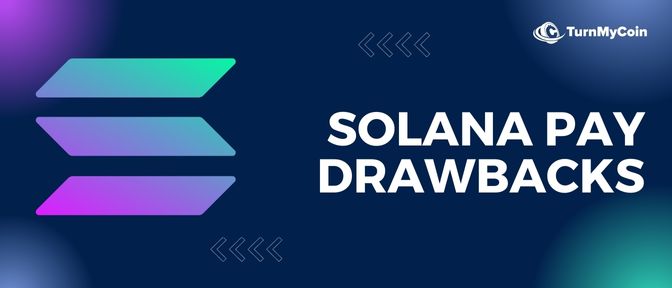
Solana Pay and the Solana network are still in the early stages of development. As a result, when a company switches to Solana Pay, there is a chance that the web could be attacked or a programming error could result in the loss of valuable assets.
In addition, if the business lacks crypto expertise, help could be lost due to common user mistakes because managing a cryptocurrency wallet isn’t intuitive for everyone.
Furthermore, even though Solana is quicker than many of its rivals, Ethereum is a much bigger general platform. As a result of Ethereum’s more extensive user base and abundance of DApps compared to Solana, Solana may experience difficulties with respect to more users.
Conclusion
Solana is an exceptional project as it is a Layer 1 solution like Ethereum rather than being a layer 2 built upon Ethereum Blockchain. As of now the concept seems better than Ethereum and other cryptocurrencies but only time can tell as Solana gets more widely used overtime.
